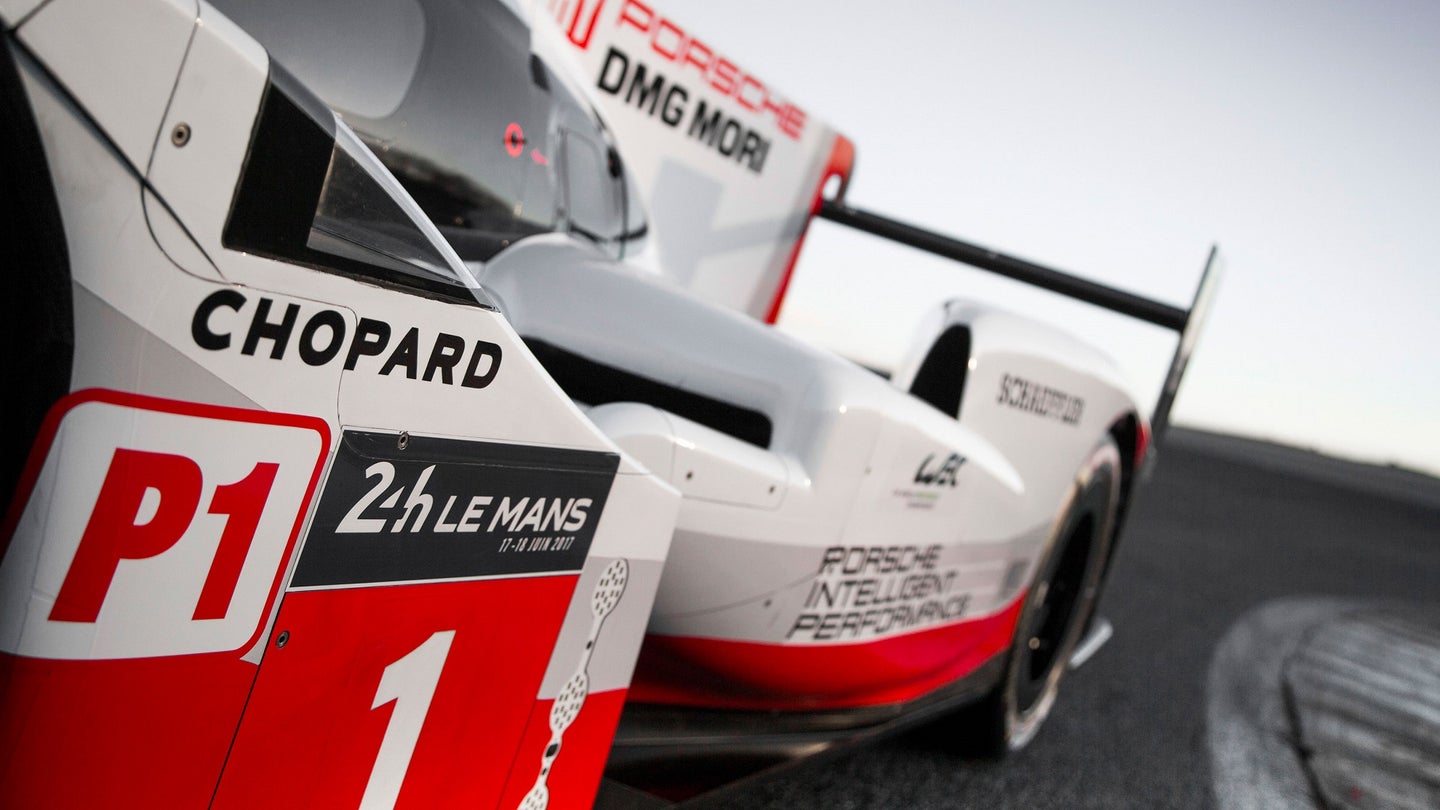An Analysis Of Porsche’s New Fourth-Generation 919 Hybrid
The 2017 Porsche 919 Hybrid is favorited to win, and win big, in the LMP1 class this year, so what makes it so great?

Porsche's 919 Hybrid LMP1 car has gone through some serious evolutionary changes since it was first introduced five seasons ago. As with most things Porsche, the older generations of the car are definitely recognizable as 919 Hybrids, but to a closer look, the cars are actually wildly different. For their 2017 challenger, however, Porsche has opted again for an evolutionary change to the design that is not exactly a wide departure from their 2016 competitor. To be fair to Porsche, that car was quite successful in its 2016 campaign, having won the 24 hours of Le Mans (as well as five other races) and the 2016 LMP1 title.
Without Audi around, it'll be a Porsche vs. Toyota affair, and as the reigning champion, Porsche has the advantage. Toyota does have the tenacity, however, so we'll have to see how the season plays out. It remains to be seen what kind of pace this new car is capable of, but Porsche promises more power and better aero efficiency than the car it replaces. Toyota has always had a fuel mileage advantage so it will be interesting to see if Porsche can continue to develop pace enough to negate that.
2017 919 Front End
, Porsche2016 919 Front End
, PorscheAt the front end of the car, the first thing you notice is a gigantic new set of headlights for 2017. The pontoon on which that headlight rides has been increased in width, and extends further forward than it did in 2016. You'll also notice the new car lacks stalk-mounted rear view mirrors, as they are now mounted down in the fender for a slightly reduced frontal area. The different angles of these photos make direct comparison a little difficult, but the cockpit appears to be ever so slightly wider (more 2016 Audi-like), and the nose cone ahead of the cockpit appears slightly raised.
2017 919 Side Profile
, Porsche2016 919 Side Profile
, PorscheThe side view is a little more explicit in some of those differences. At the front you can see the 2017 car's headlight pods extend past the nose cone with a more upright build. The front air extractor vent strakes (The hole just behind the number panel) have been removed from the 2017 car. And the most significant change on the side of the car is the rear air intake, which is taller, wider, and situated more to the fore of the car.
2017 919 Rear End
, Porsche2016 919 Rear End
, PorscheAt the rear there are fewer changes made immediately clear. The new wing endplates appear to be a bit shorter than last years' model. The main exhaust outlets seem to be about the same. The center exit hole, right below the rear wing uprights, is lower and wider in 17 than in 16, and the step-down from the central fin appears a bit less abrupt than last year.
Becuase the rules in 2017 allow for fewer tire changes than in years past, the front splitter minimum height has been raised slightly, and the number of hours manufacturers are allowed to spend in wind tunnels has been drastically reduced, Porsche's Andreas Seidl is "expecting to see a three to four-second increase in lap times at Le Mans.” If anyone can overcome a defecit like that, it'd be Porsche and their new 900-horsepower LMP1 car. Porsche and Toyota will be running pre-season testing Saturday, so hopefully we'll be able to discern a preliminary difference in the two major manufacturers after this weekend.
